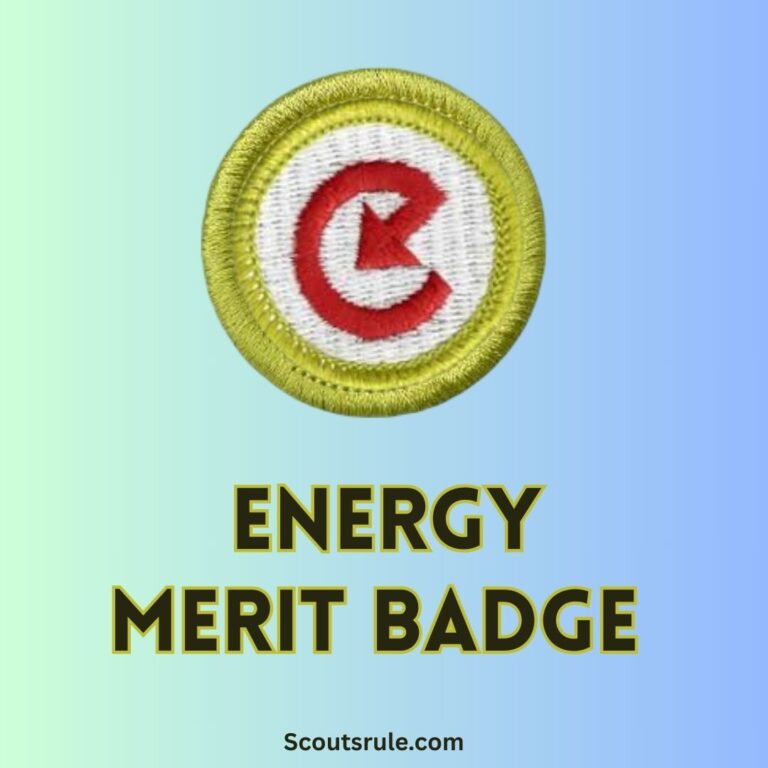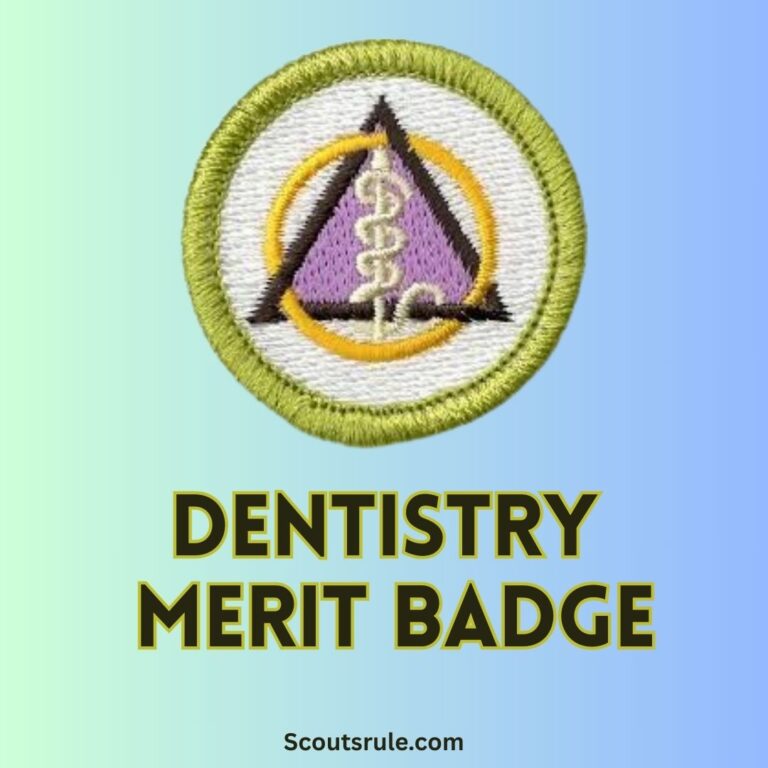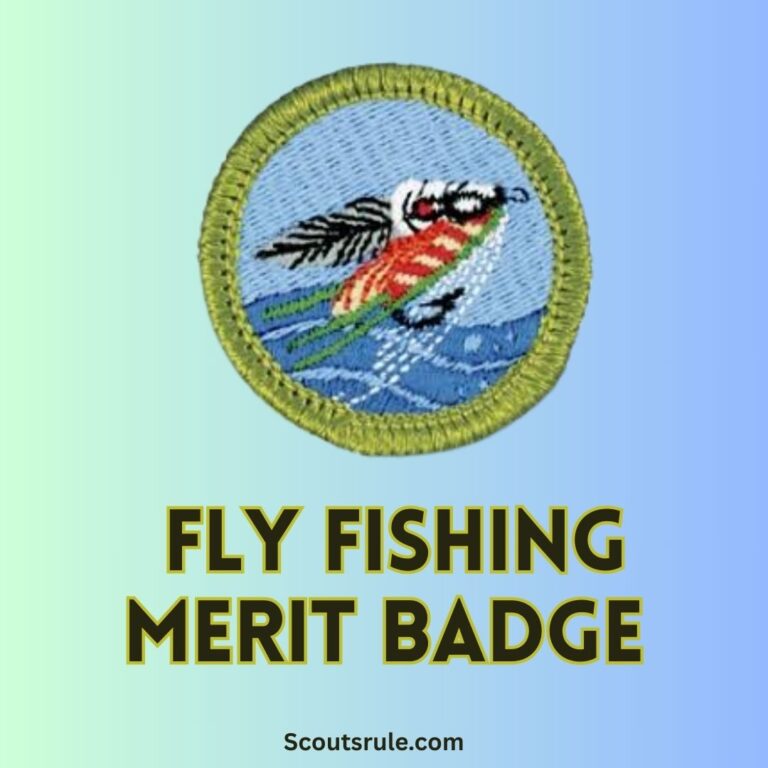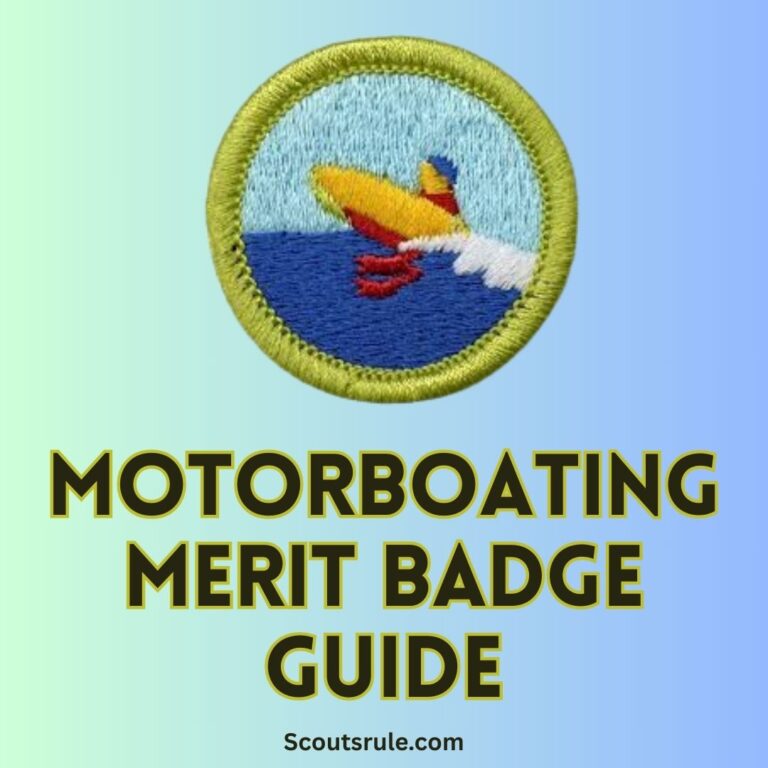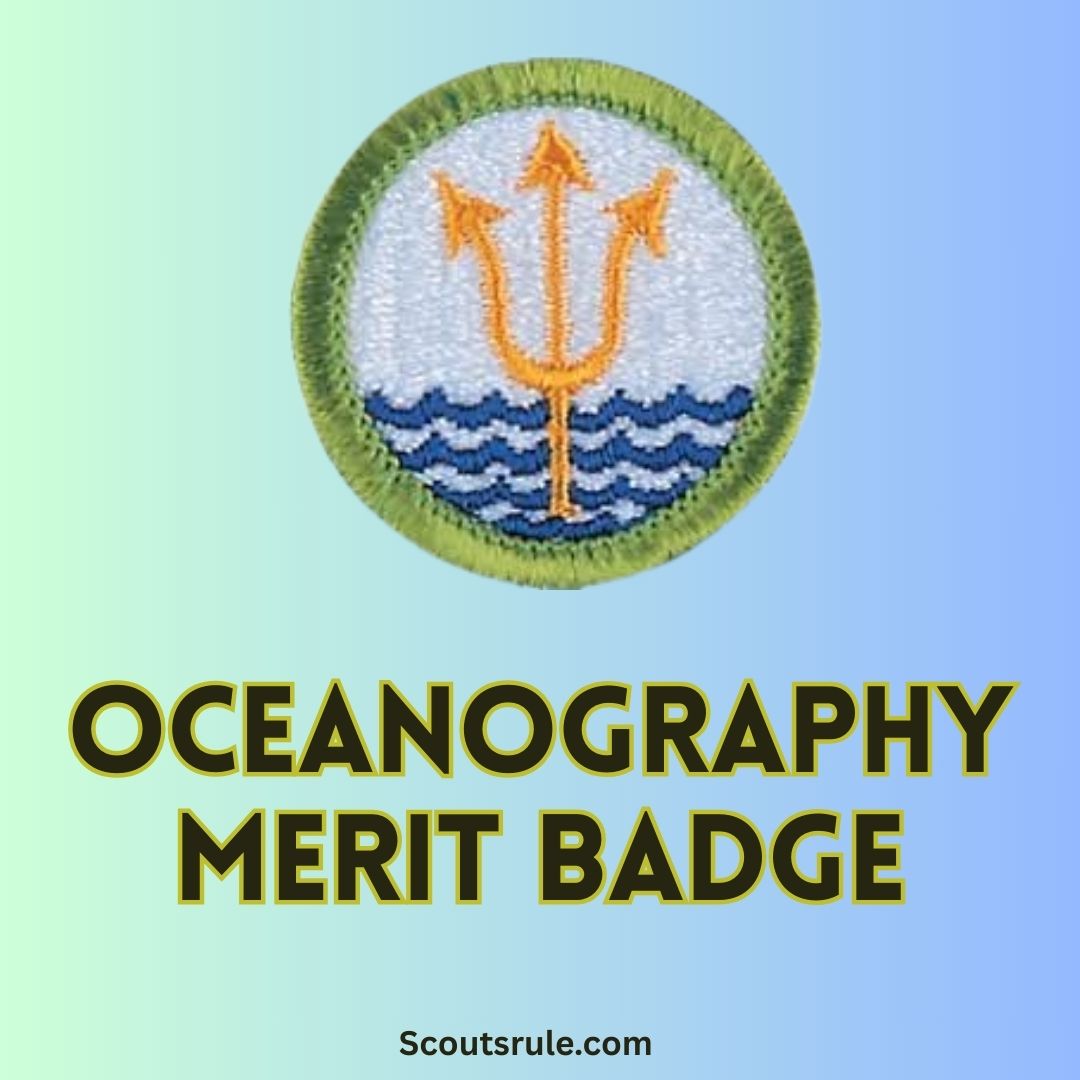
This guide is designed to help you explore the fascinating realm of the world’s oceans—from understanding fundamental oceanographic principles and exploring key branches of ocean science to learning safe observational techniques and engaging in hands‑on projects. As you work through the requirements, you’ll build practical skills, gain enriched scientific knowledge, and cultivate an appreciation for the vital role oceans play in sustaining life on Earth. Always consult the official Boy Scouts of America merit badge pamphlet and work closely with your merit badge counselor to ensure your projects and documentation meet local council standards.
Post Contents
- Introduction: The Wonders of Our Oceans
- 2. Purpose and Objectives of the Oceanography Merit Badge
- 3. Fundamental Concepts of Oceanography
- 4. The Importance of Studying the Oceans
- 5. Physical Properties of Seawater
- 6. Ocean Circulation, Currents, and Waves
- 7. Marine Geography and Underwater Topography
- 8. Field Work and Observation Techniques
- 9. Supplementary Projects and Activities
- 10. Documentation, Record Keeping, and Presentation Strategies
- 11. Conclusion: Inspiring a Lifelong Passion for the Oceans
- 12. Additional Tips and Resources
- Final Thoughts
Introduction: The Wonders of Our Oceans
Covering over 70 percent of the Earth’s surface, the oceans are the beating heart of our planet—crucial for regulating climate, supporting biodiversity, and providing natural resources for people around the globe. For centuries, humans have looked to the oceans with wonder, exploring their depths, charting their expanses, and learning from the mysteries they hold.
The Oceanography Merit Badge is your opportunity to dive into the science and exploration of the seas. By examining how oceans function, studying their physical and chemical properties, and exploring their geological features, you will not only expand your scientific understanding but also foster a personal commitment to environmental stewardship. Whether you plan on becoming a scientist, educator, or simply an informed citizen, this badge will help you develop a lifelong passion for the oceans.
2. Purpose and Objectives of the Oceanography Merit Badge
The Oceanography Merit Badge is designed to provide you with a comprehensive introduction to the study of the oceans. The objectives include:
- Educational Enrichment: Learn about the various branches of oceanography and discover how ocean science explains phenomena from tides to underwater topography.
- Practical Experience: Practice safe observational techniques, such as night sky monitoring (for stars over the ocean, if applicable), tide observation, or water sampling.
- Scientific Inquiry: Develop your skills in formulating hypotheses, collecting data, and analyzing results related to the physical, chemical, and biological properties of the oceans.
- Environmental Awareness and Stewardship: Understand how the health of the oceans affects weather, climate, and ecosystems. Appreciate the importance of conservation and responsible resource management.
- Communication and Documentation: Improve your ability to record observations effectively, use diagrams and photographs, and present your findings in a clear and organized manner.
- Career Exploration: Gain insights into potential fields in oceanography and marine science, and explore how these disciplines contribute to environmental conservation and economic development.
By fulfilling these objectives, you not only complete the mission of this merit badge but also equip yourself with skills and knowledge that will serve you well in future scientific and environmental endeavors.
3. Fundamental Concepts of Oceanography
Before you commence with observations and projects, it’s important to understand some basic ideas that underpin all of oceanography.
3.1 What Is Oceanography?
Oceanography is the scientific study of the world’s oceans. It encompasses various fields, including:
- Physical Oceanography: Examines the properties of seawater (like temperature, salinity, and density), ocean currents, waves, and tides.
- Chemical Oceanography: Focuses on the chemical composition of seawater, including nutrients, dissolved gases, and pollutants.
- Biological Oceanography: Studies marine organisms, from microscopic plankton to large marine mammals, and how they interact with their environment.
- Geological Oceanography: Investigates the structure and composition of the ocean floor, such as continental shelves, underwater ridges, and trenches.
Understanding these branches helps clarify the diverse aspects of the ocean that you may study and observe.
3.2 The Universe of the Oceans
- The Scope of the Oceans: The oceans are interconnected, covering nearly 361 million square kilometers. They influence weather patterns, support a vast array of life, and affect global climate.
- Importance to Life on Earth: Oceans regulate temperature, generate oxygen, and provide food via fisheries. They are also critical for economic activities like shipping, tourism, and energy production.
As you proceed, keep in mind the multidisciplinary nature of oceanography and how unlike any other science, it integrates physical, chemical, biological, and geological research.
4. The Importance of Studying the Oceans
Why is it important for people to learn about the oceans? There are several critical reasons:
4.1 Environmental, Social, and Economic Reasons
- Climate Regulation: Oceans absorb and redistribute heat from the sun, playing a vital role in controlling Earth’s climate.
- Biodiversity: Home to millions of species, the oceans are one of the most diverse ecosystems on the planet.
- Resource Supply: They provide food, energy, and raw materials for countless industries.
- Natural Disaster Mitigation: Understanding sea-level rise, storm surges, and tsunamis can help communities prepare for natural disasters.
- Recreational and Educational Value: The ocean is a source of inspiration, offering opportunities for exploration, recreation, and scientific discovery.
Your studies in oceanography help you understand these impacts, connecting scientific research to real-world outcomes.
5. Physical Properties of Seawater
A central aspect of oceanography is the study of seawater properties. These include:
5.1 Salinity, Temperature, and Density
- Salinity: Salinity is a measure of the concentration of dissolved salts in seawater. It is usually expressed in parts per thousand (ppt) and affects buoyancy, water density, and marine life.
- Temperature: Temperature influences the physical state of water, its chemical reactions, and the metabolic rates of marine organisms. Surface temperatures vary with regional climates and seasons.
- Density: Density is affected by both temperature and salinity. Warmer, less saline water is less dense, while colder, saltier water is denser. These differences drive oceanic circulation and mixing.
5.2 Measurement Techniques
- Instruments: Common instruments used for measuring seawater properties include thermometers, refractometers (for salinity), and CTD devices (Conductivity, Temperature, and Depth sensors).
- Data Collection: Measurements are often taken from research vessels, buoys, or coastal stations. Understanding these methods helps you appreciate how scientists monitor and study ocean environments.
Document the definitions, measurement methods, and the significance of each property. Use diagrams to illustrate how changes in salinity or temperature can alter water density.
6. Ocean Circulation, Currents, and Waves
The movement of seawater is a dynamic process that shapes climate, marine ecosystems, and coastal landscapes.
6.1 Surface Currents and Deep Ocean Circulation
- Surface Currents: Driven primarily by wind patterns, surface currents play a key role in distributing heat and nutrients across the oceans. They influence local climates and weather systems.
- Thermohaline Circulation: Often called the “global conveyor belt,” this deep ocean circulation is driven by differences in water temperature and salinity. It is essential for regulating global climate patterns.
6.2 Understanding Ocean Waves
- Wave Formation: Explain how wind interacting with the sea surface generates waves. Discuss the differences between wind waves, swells, and what causes them to break near shorelines.
- Types of Wave Phenomena: Describe related processes such as storm surges, tsunamis, and tidal bores—the differences in their formation and impact.
Using a combination of descriptive text and diagrams, illustrate how waves transport energy and how they impact coastal regions.
7. Marine Geography and Underwater Topography
The seafloor is as diverse as the surface of the Earth.
7.1 Key Features: Continental Shelf, Slope, and Abyssal Plain
- Continental Shelf: The gently sloping submerged border of a continent, rich in marine life and significant for fishing industries.
- Continental Slope: A steeper drop-off following the shelf that leads to deeper ocean regions.
- Abyssal Plain: The vast, flat areas of the deep ocean floor. Understanding these helps in determining water circulation patterns and geological activity.
7.2 Other Important Structures
Learn about smaller-scale or specialized structures including:
- Trenches and Canyons: Deep cuts in the seafloor formed by tectonic activity.
- Mid-Ocean Ridges and Rifts: Underwater mountain ranges where tectonic plates are pulling apart, leading to volcanic activity.
- Seamounts and Guyots: Isolated underwater mountains; guyots are flat-topped seamounts that indicate previous subaerial erosion.
Document your understanding of these features by creating a cross-sectional drawing of the ocean floor, labeling each feature clearly.
8. Field Work and Observation Techniques
Practical experience is key to understanding oceanography. Even if you cannot voyage out to sea, you can engage with local marine or coastal environments.
8.1 Planning Your Observation Sessions
- Site Selection: Identify accessible locations such as coastal areas, harbors, or lakes that mimic oceanic properties (e.g., tidal action) if you live inland.
- Consider the Time and Conditions: For ocean observations, choose times when conditions are optimal (e.g., a calm sea, low light pollution). Document weather conditions, tides, and any relevant details.
8.2 Recording and Documenting Observations
- Use an Observation Journal: Record the date, time, location, and weather. Note what you see—whether it’s changes in water color, the action of waves, or evidence of currents.
- Sketch and Photograph: Provide visual documentation of coastal features, ocean waves, or any unique phenomena. Annotate your sketches and images with notes on observations.
- Summarize Findings: After each session, write a summary of what you observed and what questions remain. Reflect on how these observations enhance your understanding of theoretical concepts.
9. Supplementary Projects and Activities
To further deepen your learning, consider some optional projects that extend your exploration of oceanography.
9.1 Building a Miniature Coastal Ecosystem Model
- Project Objectives: Construct a model representing a coastal ecosystem. Include elements such as tidal pools, sandy beaches, rocky outcrops, and even small vegetation.
- Materials and Steps: Use materials like clay, sand, water, and model plants. Research the dynamics of coastal ecosystems and incorporate realistic features.
- Document the Project: Keep a detailed log of your design, construction process, and the scientific principles that guided your model’s development.
9.2 Interviewing an Oceanographer or Visiting a Marine Facility
- Field Experience: Arrange an interview with a local oceanographer, marine biologist, or visit a local aquarium or marine research facility.
- Discussion Points: Ask detailed questions about their work, the challenges in monitoring the ocean, and their perspectives on ocean conservation.
- Reporting: Write a reflective report summarizing the conversation or tour, describing any insights that altered your perspective on marine science.
10. Documentation, Record Keeping, and Presentation Strategies
Organized documentation is crucial for demonstrating your learning. Here are some strategies:
- Maintain a Consistent Journal: Use a dedicated notebook or digital document to record every observation, field trip, and experiment. Include dates, weather conditions, sketches, and personal reflections.
- Assemble a Final Portfolio: Organize your work by requirement. Create sections for research, diagrams, photographs, interview summaries, and your final summary reports or presentations.
- Prepare a Visual Presentation: Use slides, posters, or digital presentations to concisely display your findings. Employ charts or diagrams to illustrate how ocean properties (like salinity and density) relate to marine currents and ecosystems.
- Review and Revise: Before submitting your portfolio to your merit badge counselor, review your materials for clarity, completeness, and accuracy. Ask peers or mentors for feedback.
11. Conclusion: Inspiring a Lifelong Passion for the Oceans
The Oceanography Merit Badge is a journey into the heart of our planet’s most extensive and mysterious resource. Every night’s observation, every field trip, and every experiment contributes to a deeper understanding of the critical role the oceans play in shaping our climate, supporting marine life, and influencing human activity. As you document your learning, reflect on the interconnectedness of physical, chemical, biological, and geological processes, and consider your role in advocating for ocean conservation, you are building a foundation for lifelong learning.
Your engagement with topics such as ocean circulation, the physical properties of seawater, and the geological features of the seafloor not only meets the merit badge requirements but also nurtures a curiosity that can lead to advanced studies in marine science. Moreover, the skills you acquire—critical observation, research, documentation, and communication—are invaluable, empowering you to contribute to environmental protection and informed policymaking in the future.
May your passion for the oceans inspire you to embrace further adventures in science, drive efforts to protect our marine environments, and foster a mindful, curious approach to the natural world. As you turn your eyes upward (and outward) to the vast blue expanses, let every observation remind you of the powerful role that the oceans play in sustaining life on Earth.
Happy stargazing and wave-watching, and may the mysteries of the deep sea continue to inspire your quest for knowledge!
12. Additional Tips and Resources
Additional Tips
- Plan Regular Observation Sessions: Consistency is key. Schedule observation nights based on the lunar cycle and weather conditions to maximize the clarity of your observations.
- Engage with Local Experts: Whether by visiting a local marine science museum or speaking with an oceanographer, real-world insights can enhance your understanding.
- Use Technology: Leverage mobile apps like Stellarium or SkySafari that include oceanographic overlays, and tracking tools for tides and currents.
- Collaborate with Peers: Form study groups with other Scouts interested in marine science. Sharing observations and ideas can provide new perspectives.
Resources
- Official Pamphlet: Always refer to the official Boy Scouts of America Oceanography Merit Badge pamphlet for up‑to‑date requirements.
- Educational Websites: Websites such as NOAA.gov (National Oceanic and Atmospheric Administration) and NASA’s Earth Observatory offer excellent resources and data.
- Books and Documentaries: Explore books like “The World Ocean: A Scientific Theory” or documentaries on marine exploration to deepen your scientific background.
- Local Institutions: Check out local aquariums, marine research centers, or coastguard facilities for hands-on learning opportunities.
- Online Communities: Join online forums or social media groups dedicated to oceanography and marine science for dynamic discussion and resource sharing.
Final Thoughts
The exploration of our oceans is an unending adventure. As you complete the Oceanography Merit Badge, you not only satisfy a Scouting requirement but also join a community of individuals passionate about understanding the natural world. From the dynamic interplay of temperature, salinity, and ocean currents to the majestic expanse of underwater topography, every observation and experiment deepens your connection to our planet.
May this badge ignite a lasting interest in marine science, inspire you to pursue further environmental studies, and empower you to be an informed steward of our precious oceans. Embrace every observation as an opportunity to learn something new, and let your documented journey serve both as a record of achievement and a stepping stone to future scientific endeavors.
Happy exploring, and may your journey into the world of oceanography open your eyes to the vast, wondrous, and vital ocean realm!

Hi, Robin here, A former lead Scout and here I share my inspiring stories about USA Scouts, leadership, adventure, how to guides and more.

